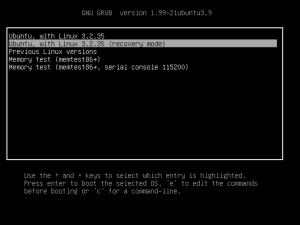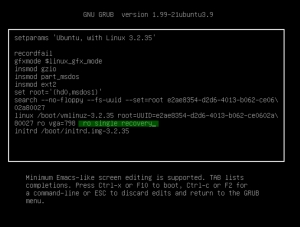On ubuntu, if your system boots without network in failsafe mode, it will wait a long time for network to be available. In many case, this won’t help much…
Moreover, if you’re trying to do things like kernel compiling and for some reason you can’t see the boot log (including this “Waiting for network configuration” message), you’ll have the impression of being stuck with a bad kernel, but in fact it is just waiting 120 seconds…
Just edit the file sudo vi /etc/init/failsafe.conf and remove all “sleep” instructions. The message will be displayed but it won’t wait any time.
To repair you network problems, you might want to check this post and this post.


